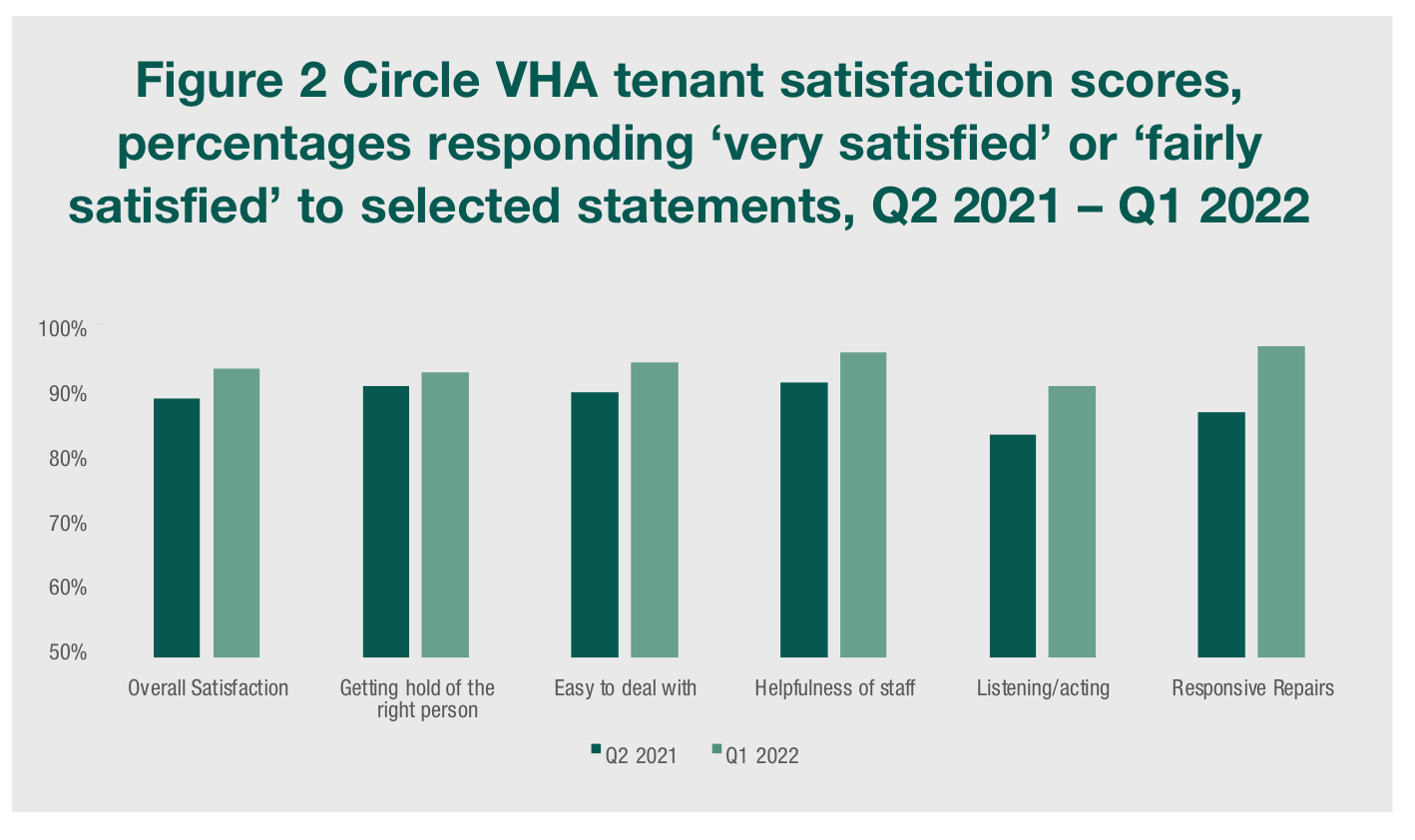
Housing Commission: In profile
25th October 2022
Darragh O’Brien TD: Housing priorities
25th October 2022Policy Insights Series shares lessons from innovative practices to housing issues

How have stakeholders working to tackle homelessness in the south-east region delivered more effective, integrated services? How have housing associations and tenants come together to build structures and cultures for tenant engagement? These are some of the questions dealt with to date by The Housing Agency’s Policy Insights Series, write Alex Dowdall, Policy Officer, and Roslyn Molloy, Head of Policy and Practice.

The answers to these questions are to be found in collaboration – an approach which is at the heart of The Housing Agency’s work. The Housing Agency works closely with the Department of Housing, Local Government and Heritage, local authorities, and approved housing bodies in the delivery of housing and housing services. Our vision is to achieve an integrated housing system, meeting the nation’s housing needs and promoting sustainable communities. We do this by providing evidence-based housing insights and data to inform thinking and policymaking; by working with others to deliver housing solutions; and by equipping our stakeholders with the capacity to respond quickly and effectively to challenges in the housing system.
With these objectives in mind, in 2022 The Housing Agency’s Policy Insights Series was launched. The aim of this new series is to provide the Irish housing sector with short case studies which highlight good practice in housing and innovative solutions to problems. The Policy Insights Series shares these examples so that housing providers can learn from each other and work collaboratively to deliver housing.

Improving homelessness services
The first issue in the series explored the case study of the south-east region to show how local authorities have collaborated to improve homelessness services. The paper describes the changes introduced since 2018 in the south-east region which have resulted in local authorities, homelessness service providers, the HSE, and other stakeholders working together to provide a more effective, integrated service. The changes introduced were in response to a rise in homelessness, including family homelessness, experienced in the region during the late 2010s, peaking in 2018. Alongside this was increasing evidence that B&Bs, the primary form of accommodation used for those presenting as homeless, were not suitable.
To address these issues, in 2018 the south-east region commenced a systematic review of its homelessness services conducted in collaboration between the local authority, the HSE, and relevant homelessness service providers. This led to a number of significant changes in the region’s structures, including the creation of a new, dedicated Homeless Lead role; the formation of the Waterford Integrated Homeless Service; the appointment of a Homeless Coordinator in each local authority; restructuring the Homeless Strategic Management Group to include directors of service, and the introduction of a Care and Case Management Support Framework. The paper describes how these structural changes were implemented, before detailing the most significant outcomes to arise from these changes. The restructuring created a highly effective and collaborative Strategic Management Group and helped build strong relationships with local stakeholders including service providers, estate agents, the HSE, and approved housing bodies. The review and restructure also saw the introduction of new innovative, collaborative programmes including the Waterford Emergency Family Service (WEFS). The WEFS was introduced as an alternative to B&B accommodation and involved hard-to-let local authority social housing units being allocated to homeless families in need of emergency accommodation. To date, 20 family and seven single accommodation units have been allocated to the project.
The paper demonstrates the positive impacts of collaborative working to deliver structural reforms to homeless service provision. These structural changes resulted in more than 50 per cent of those presenting as homeless being redirected from entering emergency accommodation. It concludes by drawing a number of lessons to be considered by other local authorities. These include benefits of a dedicated Homeless Lead role; establishing clear processes and regional homeless structures, including the involvement of senior management; and developing strong working relationships between health services, homeless service providers, AHBs, letting agents, and other key stakeholders.
Building tenant engagement structures and cultures
In its second issue, the series examined how housing providers and tenants have come together to build effective cultures and structures of tenant engagement. Using the case of Circle VHA, it describes how a housing provider and its tenants have collaborated to develop a structural approach that embeds tenant engagement policy and practice within the organisation’s strategic vision. It outlines the benefits that accrue to both tenants and housing providers from such an approach. In 2022, the Approved Housing Bodies Regulatory Authority (AHBRA) published new standards requiring AHBs to actively seek input from tenants and provide opportunities for engagement on service provision. The aim of the case study is therefore to provide information to other social housing providers seeking to develop tenant engagement structures.

Circle VHA began the process of building a tenant engagement structure when they met with representatives from Supporting Communities, Northern Ireland’s independent tenant and community engagement champion, in 2019. This collaboration built a foundation for developing and implementing a tenant engagement structure and strategy. The paper describes the incremental approach that was adopted, and which began with planning, consultation, and training. This included forming a Tenant Steering Group to drive tenant involvement in the process and introducing organisation-wide tenant engagement training for all Circle VHA staff. The next stage was to embed tenant engagement within Circle VHA’s structures, specifically through the formation of a Tenant Advisory Group. This group has a formal position within Circle’s structure, and regularly meets with management, board, Chair and CEO to provide feedback and oversee tenant-related policies, procedures, and publications. The Tenant Advisory Group also led the third stage of the process – drafting a tenant engagement strategy. This strategy, written by tenants, sets out a menu of tenant engagement opportunities to be pursued by Circle VHA in the period 2021-2024, the most ambitious of which is to introduce a process to enable tenant representation on Circle VHA’s board. The final stage of the process involved the allocation of sufficient resources to tenant engagement, including the hiring of a dedicated tenant engagement officer, with tenants involved in all stages of the hiring process.
The paper demonstrates the positive impacts and measurable outcomes attributable to this new tenant engagement structure, including meeting over 90 per cent of the targets outlined in Tenant Engagement Strategy’s Year 1 Action Plan, the delivery of organisation-wide training to all Circle VHA staff, and the improvement of tenant satisfaction scores over the period in which the tenant engagement strategy was implemented (Figure 2). A number of lessons for other housing providers are identified, ranging from the importance of senior management support from the beginning, to embracing technology and online resources, supporting tenants themselves to become leaders of the project, and the role of outside organisations in building trust and furthering the collaborative approach.

Future issues
The Housing Agency’s Policy Insights Series will continue to identify good practice in housing, promote collaborative working, and share innovative solutions to housing problems. The third issue in the series, due to be released shortly will consider how local authorities have learned from each other to drive quality asset management procedures. Ideas and case studies for future issues, to be published at regular intervals, are actively sought by The Housing Agency. Those who would like to share their case studies of innovative housing solutions should contact communications@housingagency.ie.
All issues of the Policy Insights Series can be found at www.housingagency.ie/publications, or by following The Housing Agency on twitter or LinkedIn

E: communications@housingagency.ie
W: www.housingagency.ie
S: twitter.com/HousingAgencyIE
L: www.linkedin.com/company/housingagencyie/






